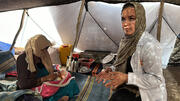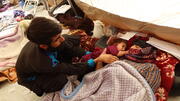-
Country Pages
-
Asia & the Pacific
- Afghanistan
- Bangladesh
- Bhutan
- Cambodia
- China
- India
- Indonesia
- Iran, Islamic Republic of
- Lao People's Democratic Republic
- Malaysia
- Maldives
- Mongolia
- Myanmar
- Nepal
- Pakistan
- Papua New Guinea
- Philippines
- Sri Lanka
- Thailand
- Timor-Leste
- Viet Nam
-
Eastern Europe & Central Asia
- Albania
- Armenia
- Azerbaijan
- Belarus
- Bosnia and Herzegovina
- Georgia
- Kazakhstan
- Kosovo Office
- Kyrgyzstan
- Moldova, Republic of
- North Macedonia
- Serbia
- Tajikistan
- Türkiye
- Turkmenistan
- Ukraine
- Uzbekistan
-
Arab States
- Algeria
- Djibouti
- Egypt
- Iraq
- Jordan
- Lebanon
- Libya
- Morocco
- Oman
- Palestine
- Somalia
- Sudan
- Syrian Arab Republic
- Tunisia
- Yemen
-
East & Southern Africa
- Angola
- Botswana
- Burundi
- Comoros
- Congo, the Democratic Republic of the
- Eritrea
- Eswatini
- Ethiopia
- Kenya
- Lesotho
- Madagascar
- Malawi
- Mauritius
- Mozambique
- Namibia
- Rwanda
- Seychelles
- South Africa
- South Sudan
- Tanzania, United Republic of
- Uganda
- Zambia
- Zimbabwe
-
Latin America & the Caribbean
- Argentina
- Bolivia, Plurinational State of
- Brazil
- Chile
- Colombia
- Costa Rica
- Cuba
- Dominican Republic
- Ecuador
- El Salvador
- Guatemala
- Haiti
- Honduras
- Mexico
- Nicaragua
- Panama
- Paraguay
- Peru
- Uruguay
- Venezuela, Bolivarian Republic of
- Caribbean (multi-country)
-
West & Central Africa
- Benin
- Burkina Faso
- Cabo Verde
- Cameroon
- Central African Republic
- Chad
- Congo
- Côte d'Ivoire
- Equatorial Guinea
- Gabon
- Gambia
- Ghana
- Guinea
- Guinea-Bissau
- Liberia
- Mali
- Mauritania
- Niger
- Nigeria
- Sao Tome and Principe
- Senegal
- Sierra Leone
- Togo
-

UNFPA Afghanistan
Home to one of the world’s youngest, fastest growing populations, Afghanistan faces challenges exacerbated by conflict, weak governance and cultural barriers, especially in the case of impoverished women and children. UNFPA programmes invest in reproductive health and rights, gender equality, and socioeconomic development; humanitarian assistance and youth issues are priorities in all three areas. Assistance is channelled to replicable programmes in provinces with high rates of poverty and maternal and infant mortality, and where communities are actively engaged in their development.
Population
 Population aged 0-14
Population aged 0-14 Population aged 15-64
Population aged 15-64 Population aged 65+
Population aged 65+
Sexual and reproductive health
 Births attended by skilled health personnel
Births attended by skilled health personnel
Family Planning
 Modern method
Modern method
Education
Gender, Rights, and Human Capital
Harmful Practices
Population Pyramid
Life Expectancy
Total fertility rate
News
“Hope arrived in the form of Rahna”: The life-saving work of midwives after the Afghanistan earthquake
ZINDAJAN, Afghanistan – Early in the morning on 15 October, 20-year-old Hanifa felt them: The contractions that…
“They need someone to listen”: UNFPA supports essential psychosocial service delivery after deadly earthquakes in Afghanistan
HERAT, Afghanistan – “I thought that somebody was shaking me. And then the roof collapsed.”
This is what 25-…


Social Updates
Tweets from UNFPATürkiye